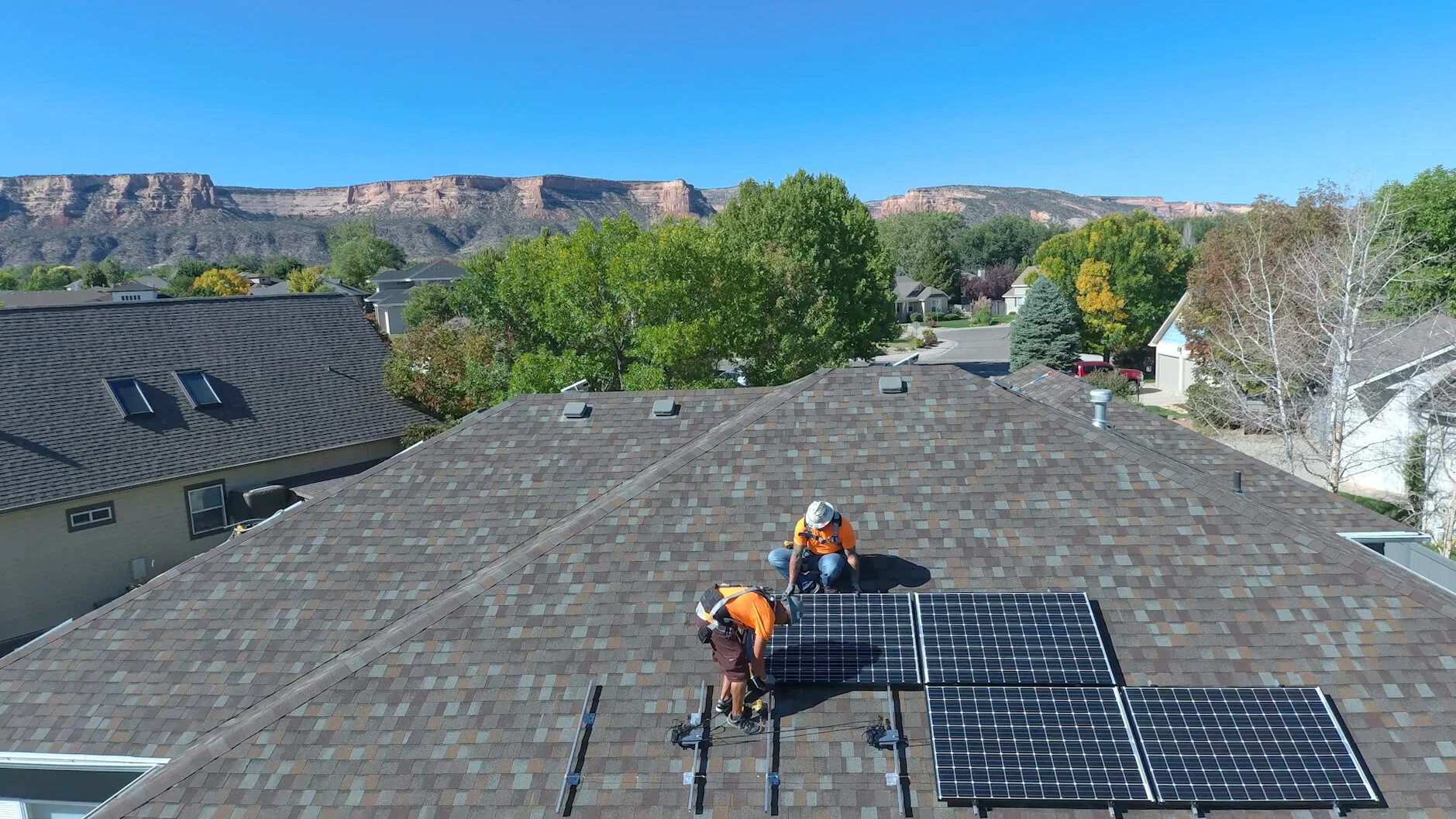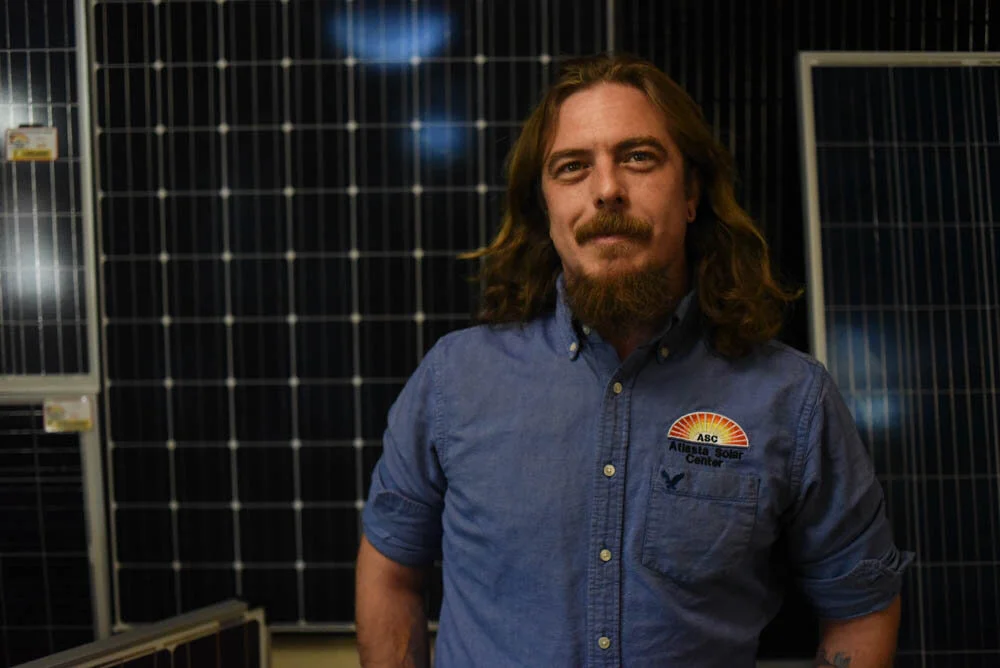Mesa County Solar Co-Op Provides Homeowners with a more Accessible Option for Transitioning to Renewable Energy.
In the past, the freedom and cost-saving benefits of solar energy have appeared economically out of reach for most people. In some areas, solar co-ops have sprung up to help average people become involved with solar. In sunny Grand Junction, Colorado, the Mesa County Solar Co-Op has brought communities together to better educate and inform home and business owners on their options, as well as allow those interested in solar energy to receive group discounts, making it more affordable to homeowners. Nationally, solar installations in 2020 are seven times the number of installations in 2010. Solar co-ops and the solar investment tax credit (ITC) have been a large part of that increase.
“Being a part of a Co-Op feels more like a partnership. There’s a lot of education involved that makes you feel empowered and you really understand what you're doing,” said Wendy Metzger, a member of the Mesa County Solar Co-Op. The electric power sector is among the largest contributors of greenhouse gases in the United States, representing 28% of all emissions. Solar energy is not only a key component to reducing greenhouse gases and the impacts of climate change but is also contributing to a more resilient and reliable energy grid.
Western Colorado Alliance (WCA) saw the success of two recent solar co-ops elsewhere in Colorado and wanted to bring the same model to consumers on the Western Slope as part of their clean energy programming. WCA received the financial support of Alpine Bank, a major community donor, to partner with Solar United Neighbors and leverage their deep experience in solar co-op creation. WCA worked with community members and other local organizations to find people who were interested in going in on a solar co-op.
WCA put out the word, held town hall meetings, placed letters in the newspaper, and assembled a steering committee of residents who oversaw the launch and promotion of the co-op.The steering committee enrolled co-op members and evaluated proposals from a number of providers before selecting Grand Junction-based Atlasta Solar Center, and then helped connect members with Atlasta Solar Center for home-specific evaluations, bids and ultimately installation.
Atlasta Solar Center is a local solar installer which has been locally owned and operated in Grand Junction, CO, for over 42-years, and serves the greater western Colorado area.The main focus of the business now is solar electric, both commercial and residential. Christopher Campbell is the Senior Project Manager with Atlasta Solar Center and is involved with a variety of commercial and municipal projects and project management. “You're reducing the carbon footprint and carbon impact of that person or that family. And that benefits everyone. So what we provide customers is a much bigger impact than just an individual financial impact,” explained Chris.
By forming a co-op, consumers were able to pool their collective buying power and obtain discounted pricing for solar installation. This process was also a great way to build community while educating residents and providing resources to understand the benefits and cost-savings of solar electricity, and broaden their network for clean energy organizing in the future.
The co-op had a goal of having 30 homeowners committed to transitioning to solar energy. By the end of the sign-up period in Mesa County, over 200 local residents ended up joining the co-op. “These co-ops, collectively in the state of Colorado, have surpassed a megawatt in solar installations this year and will offset 400 million plus tons of carbon,” explained Chris. Out of the 200 people in Mesa County who signed up, Chris is hoping that anywhere from 75 to 100 will go through with installing solar in their homes. Atlasta Solar Center was proud to make the Mesa County Co-op the most successful in the state for 2020 with over 400 kilo-watts of solar installed. “The impact that I'm able to make on people's individual lives on a daily basis while serving the community as a whole is really rewarding,” said Chris.
Atlasta Solar Center takes homeowners through the entire solar process from education and proposal to installation by a crew of licensed electricians. People generally tend to be drawn to solar electric because the system will eventually pay for itself and will save homeowners money over time. “I had $150 a month bill with Xcel Energy, 80% of it was electricity. Now I pay $5 a month for the service fee, $20 a month for the natural gas, and the $125, I was paying on a monthly basis for electricity, it's back in my wallet,” said Chris, on his own experience with using solar in his home and rental properties.
“I'm a big believer in what we do. I've done it myself—several times; it's phenomenal,” said Chris, “It's really exciting every time I go and do a final walkthrough with the customer and the system is finally turned on and for the homeowner to actually be able to see the modules on the roof and the system producing and performing.” Atlasta Solar Center has been in business for over 42 years and continues to see the benefits not only financially for the homeowners but for the environment as a whole. “We've got some data that we collect from systems that we've put online. And we regularly produce several gigawatts of power on an annual basis off the systems collectively,” said Chris.
The economics of solar depend heavily on net metering, which allows a solar owner to offset any grid energy they might use (say, at night when the sun's not shining) with the excess solar energy they produce during the day going back to the grid. In 2020, an organization with ties to the fossil fuel industry tried to get the Federal Energy Regulation Commission (FERC) to roll back net metering. In the end, FERC sided with community groups, solar users, and solar installers. ”That's a fight that we helped win on our end, just to make sure that current and future customers weren't impacted by policy change that would have made sense for nobody except for very few people,” explained Chris.
The solar investment tax credit has been a big help for solar developments in recent years. Unfortunately, the credit is being phased out for residential customers in 2021. In 2019, the credit covered 30% of the project cost, but that dropped to 26% in 2020 and the credit will be gone entirely after the 22% available through December 31, 2021. For commercial solar arrays(business or non-primary residential) the tax credit will remain at 10% after 2021. Once that tax credit goes away, it will be even more challenging for low income households to install solar. Chris has been working to push for the state of Colorado to come up with a program for low income customers. “Locally, we work with Housing Resources of Western Colorado. They go do an energy audit and figure out if solar might be a good fit for a lower income family. But there are restrictions on those types of programs and the income thresholds are pretty low, you know, well below poverty level. So, it's not accessible to all. I think there's some things that could be done at the state or federal level to make solar more accessible,” said Chris.
The community power of solar co-ops has helped people achieve their low-cost energy goals whether it be in their businesses or homes. "I invested in a large system for my Aquaponic farm,” said Wendy Metzger, “I would not have had the confidence to go big as a new small business owner without the support of the Mesa County Coop and Solar United Neighbors.”


